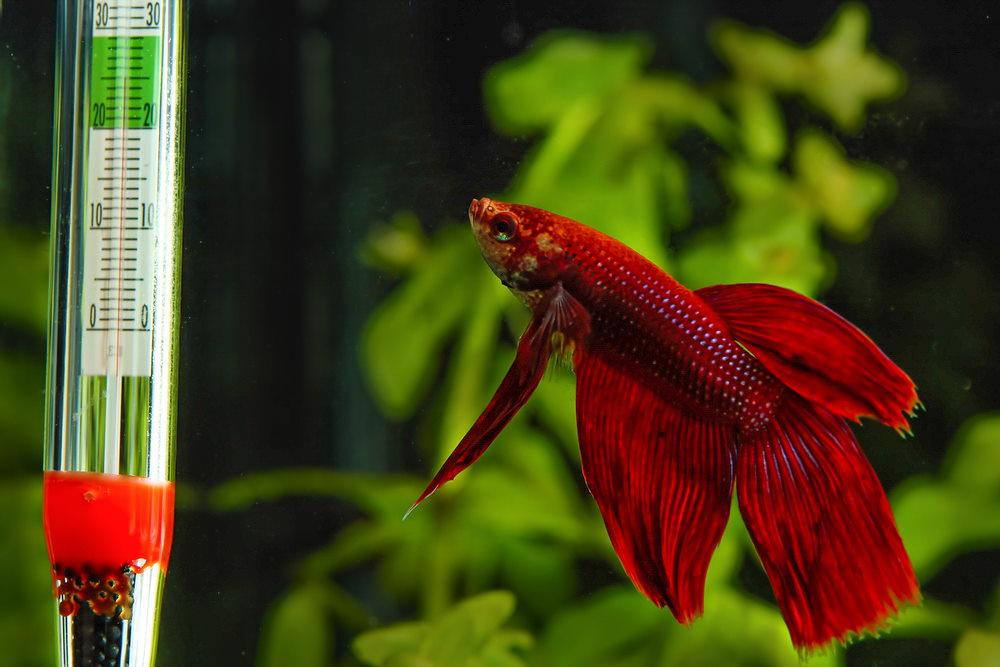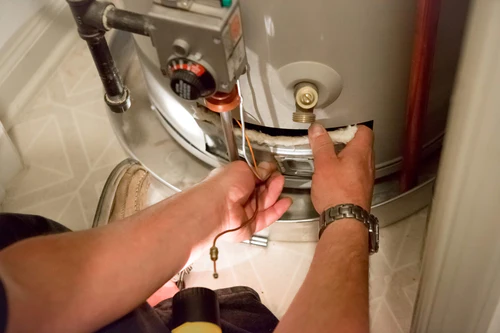Aquatic Knowledge
How to use a aquarium heater: essential tips for beginners
When setting up an aquarium, one of the essential pieces of equipment you’ll need is an aquarium heater. It might seem like a simple device, but it plays a crucial role in maintaining a stable environment for your fish. If you’re new to aquarium care or just looking to optimize your setup, understanding how to use an aquarium heater effectively is key. In this guide, I’ll walk you through everything you need to know to keep your aquatic friends happy and healthy.
Understanding Aquarium Heaters
Before diving into how to use an aquarium heater, it’s important to grasp what it actually does. An aquarium heater maintains the water temperature in your tank, which is vital for the health of your fish and other aquatic life. Different fish species thrive in different temperature ranges, so a heater ensures that the water stays within the optimal range for your tank’s inhabitants.
Types of Aquarium Heaters
There are several types of aquarium heaters, each with its own advantages:
- Submersible Heaters: Submersible heaters are designed to be fully immersed in the water. They are commonly used because they provide accurate and even heating. These heaters are usually placed near the bottom of the tank where they can distribute heat evenly throughout the aquarium. The primary advantage of submersible heaters is their efficiency and ability to maintain a consistent temperature.
- Hang-On Heaters: Hang-on heaters are installed outside the aquarium, typically hanging on the side of the tank. They are often used in smaller tanks or where space inside the tank is limited. These heaters are easy to install and maintain but might not be as effective as submersible heaters in large aquariums.
- Inline Heaters: Inline heaters are installed in the water plumbing system of the aquarium. They are ideal for large tanks or tanks with complex filtration systems. Inline heaters are highly efficient and can heat water as it passes through them, providing a consistent temperature throughout the tank.
How to Choose the Right Aquarium Heater
Choosing the right heater is crucial for maintaining a stable environment. Here’s what to consider:

- Considerations for Heater Size and Power: Choosing the right heater depends on the size of your aquarium. A general rule of thumb is to use 5 watts of heating power per gallon of water. For example, a 20-gallon tank would need a 100-watt heater. Make sure to choose a heater that matches your tank size to ensure efficient and effective heating.
- Matching Heater to Tank Volume: The heater’s wattage should be appropriate for the tank’s volume. Using a heater with too little power may not effectively warm the water, while a heater with too much power might overheat the tank. Always refer to the manufacturer’s guidelines for wattage recommendations based on your tank size.
- Heating Needs for Different Types of Aquariums (Freshwater vs. Saltwater): Freshwater and saltwater aquariums may have different heating requirements. Saltwater tanks often need more precise temperature control due to the sensitivity of marine life. Ensure that the heater you choose is suitable for the type of aquarium you have.
Setting Up Your Aquarium Heater

- Placement of the Heater: For optimal performance, place the heater near the water flow to ensure even heat distribution. Submersible heaters should be positioned close to the substrate but not directly on it. Hang-on heaters should be installed according to the manufacturer’s instructions to ensure they are fully submerged.
- Setting the Temperature: Adjust the heater to the desired temperature for your specific fish and aquatic life. Most heaters come with a dial or digital control that allows you to set the temperature accurately. It’s important to calibrate the heater according to the needs of your tank’s inhabitants.
- Ensuring Proper Installation: Follow the manufacturer’s installation instructions carefully. Ensure that the heater is securely placed and that all connections are properly made. A well-installed heater will function more effectively and reduce the risk of malfunction.
How to Use an Aquarium Heater
Now that you understand the basics of aquarium heaters, let’s dive into the detailed steps on how to use an aquarium heater effectively. Whether you’re a beginner or just looking to optimize your aquarium setup, following this guide will ensure a safe and stable environment for your aquatic life.
Install the Heater
The first step in learning how to use an aquarium heater is proper installation. Here’s how to do it:
- Placement in the Tank: For submersible heaters, you have the option to position the heater either vertically or horizontally. Vertical placement is more common, but horizontal positioning is recommended when you want more even heat distribution, especially in larger tanks.
- Submerge the Heater: Ensure that the heater is completely submerged in water. Most submersible heaters will have a water line indicating the minimum water level required for safe operation. Failing to submerge the heater can lead to damage and overheating.
- Avoiding Obstructions: Make sure that the heater is placed in a location with good water flow. This ensures that the heat is distributed evenly throughout the tank. Avoid placing it near decorations, plants, or filter intakes, as this can hinder water circulation around the heater.
Set the Temperature
Once the heater is installed, it’s time to set the temperature.
- Adjusting the Settings: Most aquarium heaters come with a control dial or digital settings for temperature adjustment. Set the temperature according to the needs of your fish. Most tropical fish prefer temperatures between 74°F and 80°F (23°C to 27°C), but always research the specific needs of your fish species.
- Using a Thermometer: It’s highly recommended to use a separate thermometer in addition to the heater’s built-in thermostat. Aquarium heaters can sometimes deviate from the actual water temperature, so a reliable thermometer will help you ensure the water stays at the desired temperature.
- Allow for Stabilization: After adjusting the heater, give it some time to stabilize the tank’s temperature. This can take a few hours or up to 24 hours, depending on the size of the tank and the difference between the current water temperature and the set temperature.
Monitor the Heater
After installing and setting the temperature, monitoring the heater is essential to ensure it’s working correctly.
- First Few Days: Pay close attention to the heater during the first 48 hours after installation. Check that the water temperature is consistent and within the desired range. Sudden spikes or drops in temperature could indicate a malfunction.
- Look for Signs of Problems: Listen for unusual noises like clicking or buzzing, which could indicate an issue with the heater’s components. Also, visually inspect the heater for any signs of cracks or damage.
- Check the Water Temperature Regularly: Continue to check the water temperature periodically, even after the initial installation period. Consistency is key for your fish’s well-being, so make sure the heater is maintaining a stable temperature over time.
Regular Maintenance
Proper maintenance of your aquarium heater will extend its lifespan and ensure it continues to function efficiently.
- Cleaning the Heater: Over time, algae and mineral deposits can accumulate on the heater. Gently clean the heater with a soft cloth or sponge during your regular aquarium maintenance routine. Avoid using harsh chemicals, as these can harm your fish and damage the heater.
- Inspecting the Cables and Connections: Periodically check the power cord for any signs of wear or fraying. Damaged cables can be dangerous and should be replaced immediately. Also, ensure that the plug fits securely in the socket to prevent power interruptions.
- Test the Heater Regularly: Even if everything seems fine, it’s a good practice to test the heater every few months. Unplug the heater and let it cool down, then plug it back in and observe how it functions. Testing the heater ensures it’s still heating efficiently and that the thermostat is accurate.
Backup Plan for Heater Failure
No heater lasts forever, so it’s always good to have a backup plan.
- Having a Spare Heater: Keep a spare heater on hand in case your primary heater fails unexpectedly. This is especially important in colder climates where a malfunctioning heater can lead to dangerous drops in temperature.
- Using Multiple Heaters in Large Tanks: If you have a large tank, it may be beneficial to use two smaller heaters rather than one large one. This distributes the heat more evenly and provides a backup in case one of the heaters fails.
Common Issues with Aquarium Heaters and How to Fix Them

Even with the best heater, you might encounter some issues. Here’s how to handle them:
Heater Not Working
If your heater isn’t working, check the power supply and connections. Sometimes, simply unplugging and replugging the heater can resolve the issue. If it still doesn’t work, you might need to replace it.
Temperature Fluctuations
If you notice temperature fluctuations, it could be due to the heater’s placement or a malfunction. Ensure the heater is properly positioned and check the thermostat settings. If the problem persists, the heater might be faulty.
Overheating
If the water is too hot, check the heater’s setting and reduce it if necessary. Ensure the heater is not in direct contact with the tank’s walls or substrate, as this can cause overheating.
Tips for Maintaining a Stable Temperature
Maintaining a stable temperature is crucial for your fish’s health. Here are some tips:
- Use a Reliable Thermometer: Regularly check the water temperature with a reliable thermometer to ensure it’s within the desired range.
- Avoid Direct Sunlight: Keep your tank away from direct sunlight or heat sources, as this can affect the water temperature.
- Insulate the Tank: In cooler environments, insulating the tank can help maintain a stable temperature and reduce the heater’s workload.
When to Replace Your Aquarium Heater
Aquarium heaters have a lifespan, and knowing when to replace them is important. Replace your heater if:
- It’s Not Maintaining the Correct Temperature: If the heater can’t maintain the right temperature despite adjustments, it’s time for a new one.
- It’s Showing Visible Damage: Cracks, frayed cables, or other damage are signs that the heater should be replaced.
- It’s Outdated: If your heater is old and no longer efficient, upgrading to a new model can improve performance and energy efficiency.
Conclusion
Understanding how to use an aquarium heater properly is essential for maintaining a healthy and stable environment for your aquatic life. By choosing the right heater, installing it correctly, and performing regular maintenance, you can ensure your tank’s temperature stays within the optimal range for your fish and plants. Remember to monitor your heater regularly and address any issues promptly to keep your aquarium thriving.
FAQs
1. How often should I check my aquarium heater?
Check your heater regularly, especially during the first few days after installation. After that, a weekly check is usually sufficient.
2. Can I use a heater for a saltwater aquarium?
Yes, most heaters are suitable for both freshwater and saltwater aquariums. Just ensure the heater is rated for the type of tank you have.
3. What should I do if my heater keeps turning off?
If your heater keeps turning off, check the power supply and connections. If the problem persists, the heater may need repair or replacement.
4. How do I know if my heater is working properly?
Use a separate thermometer to monitor the water temperature. If it matches the heater’s setting and remains stable, your heater is likely working properly.
5. Can I use multiple heaters in one tank?
Yes, using multiple heaters can help maintain a stable temperature, especially in larger tanks. Just ensure they’re evenly distributed and properly set.
